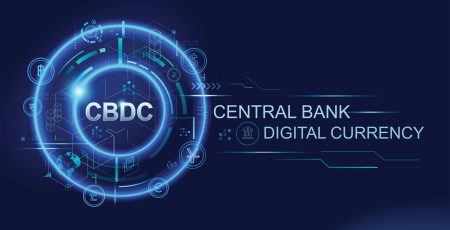Central bank digital currency (CBDC) is a type of fiat currency, which doesn’t exist as banknotes and coins, but rather exists only in the form of digital data. Digital currencies are stored in digital wallets. Typically, its definition is inseparable from that of a “central bank.”
What Exactly is Central Bank Digital Currency?
Central Bank Digital Currency, CBDC, is the digital equivalent of physical cash that can be transferred into circulation by central banks. In the same way that CBDC uses the current infrastructure to transfer physical cash between bank accounts, blockchain technology could be used to facilitate these transfers digitally. The main questions surrounding this topic are: why would we need this and what are the implications on central banking?
In the UK, the Bank of England is the Central Bank and it’s currently working hand in hand with the HM Treasury towards bolstering digital currency across the UK.
How CBDC Differs from Cryptocurrency?
CBDCs and cryptoassets are both digital currencies, but still, they have key differences. Cryptoassets are decentralised, peer-to-peer virtual currencies that can be traded independently of central banks or governments with the most well-known cryptoasset being bitcoin.
Central banks issue CBDCs as a substitute for cash, meaning they can be used to make payments just like physical notes and coins. They may also be used to make payments between financial institutions. In contrast, cryptoassets are usually transacted privately between two parties without any involvement from the issuing bank or government institution.
Why is the UK Considering a Central Bank Digital Currency?
Change is inevitable, and we must be willing to adapt with the times. The challenges facing the global economy are immense, but so is the opportunity. Cash has been steadily declining in importance since the introduction of ATMs and contactless cards in the 1990s and 2000s. Today, only about 15% of all payments in the UK are made using cash – down from 40% two decades ago – and many businesses no longer accept it at all.
This trend is expected to continue as more people adopt digital payments and other non-cash payment methods such as QR codes and mobile wallets start gaining traction. But there are still concerns about whether we have enough cash available in emergencies or during bank holidays when banks aren’t open for business. Surely, this is food for thought.
What are the Chances CBDC Will replace Cash?
Despite the possible official adoption of digital currency by governments, cash is still a popular way to pay for things and we know it’s important to many people. The Bank of England will keep issuing cash in the UK as long as people want to use it and have no plans to stop providing notes and coins within the next decade.
At the end of the day, central bank digital currency has the potential to promote a cashless society. This will likely take time to achieve, but the push toward further digital currency adoption is inevitable. Stay tuned, because this technology will certainly be the next big thing in financial service provision.
For this and other investment inquiries, chat with an expert today at: info@dna-consultancysolutions.co.uk
Image Source: Adobe Stock
Disclaimer: This article is provided for informational purposes only. It is not offered or intended to be used as legal, tax, investment, financial, or other advice.









